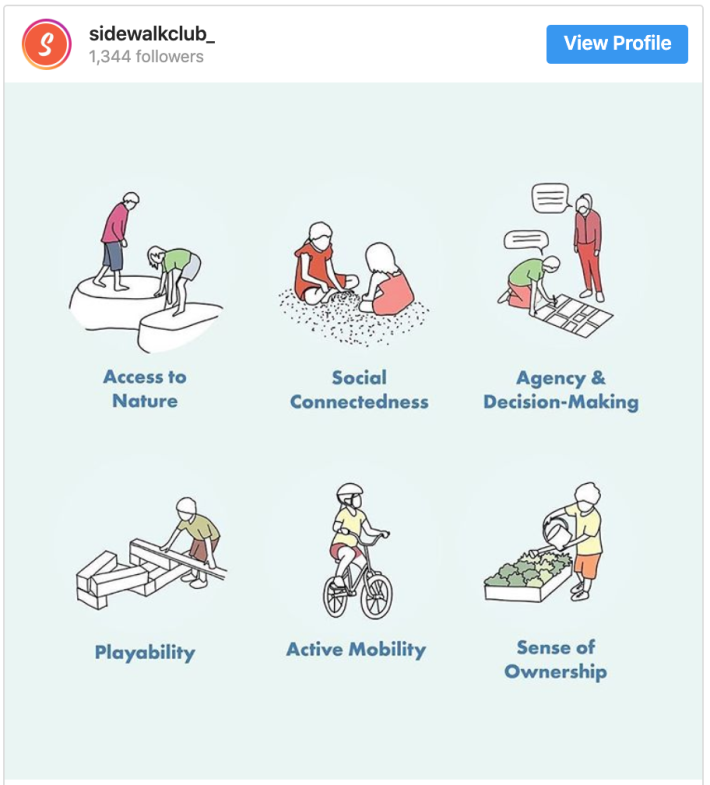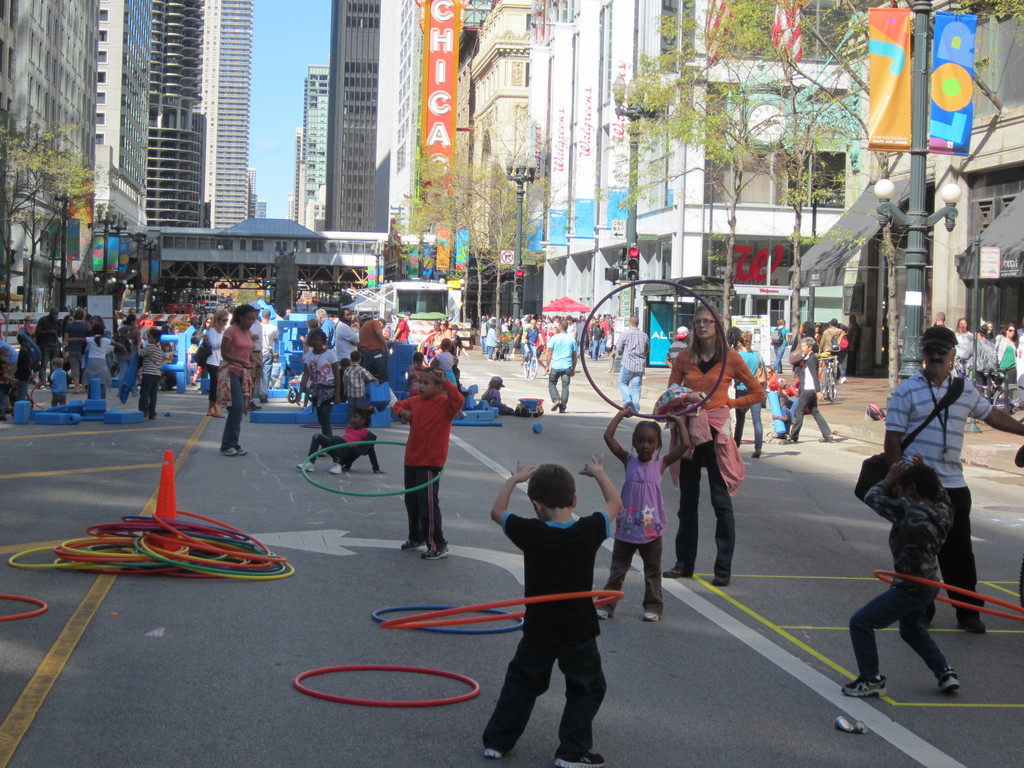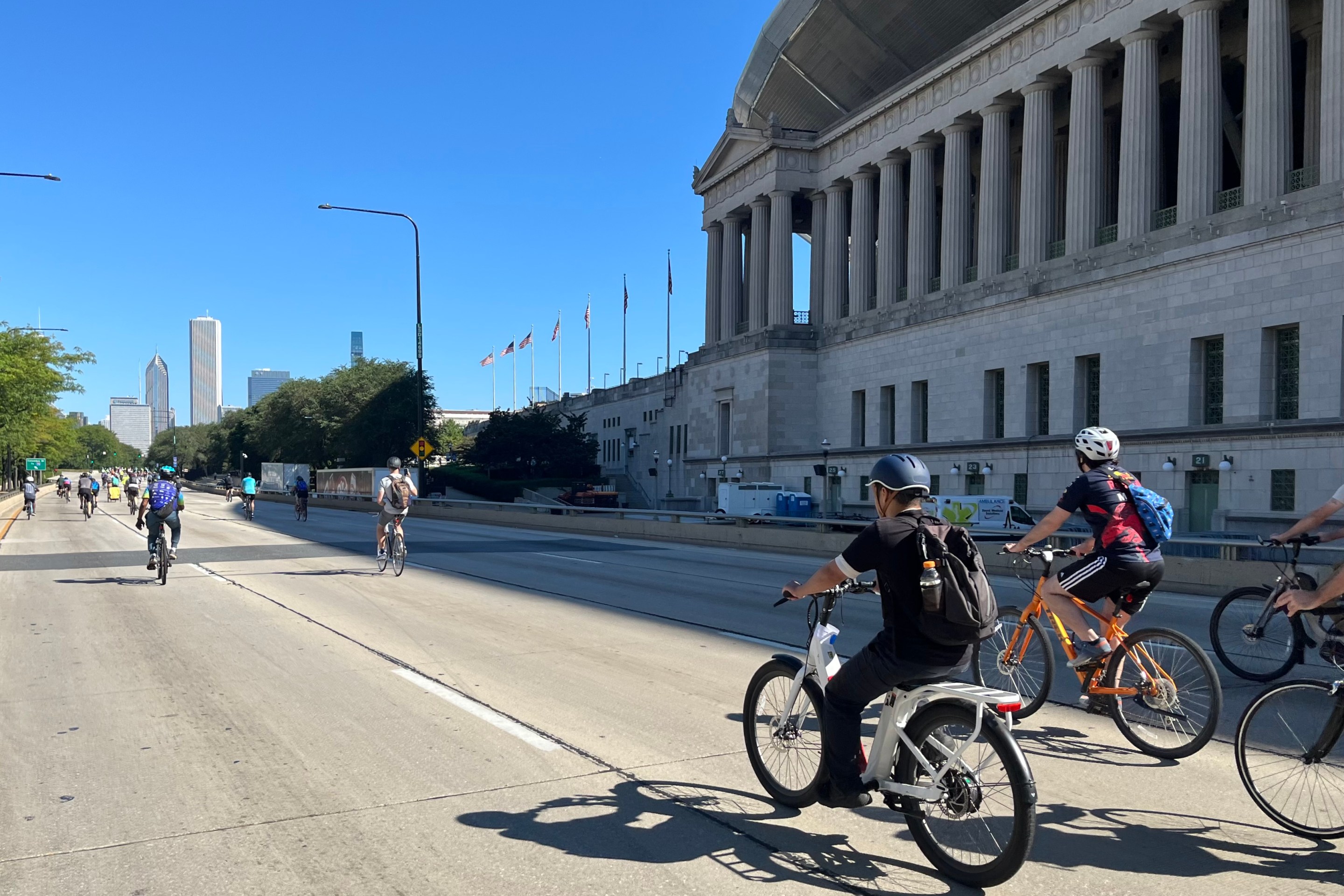One of the reasons I love hopping on my bike is revisiting the feelings I had as a child biking around the neighborhood with my friends. I often felt carefree and euphoric riding around singing with my friends. I was lucky enough to live a portion of my life in a somewhat tucked-away street in Little Rock, Arkansas, that rarely saw folks just passing through or speeding through on their way to a main street. My friends and I would spend hours biking the ring of streets that surrounded our neighborhood. I don't recall us ever encountering an angry driver or having a close call with being struck. Perhaps if we had lived in a larger, busier city like Chicago we might have had a different experience.
While I don't have children and likely never will, I often think of how we can make our streets safer for kids and give them the opportunity for more independent mobility. I live in Rogers Park, and last summer I met with my alderwoman Maria Hadden over the summer to plant the idea of eliminating the free curbside parking along Glenwood and Greenview avenues in order to make more room for walking, biking, and public space.
Hadden wasn't supportive the idea, and part of her opposition was do her seeing cars as necessary for parents to transport children. However, almost half of all motor vehicle trips are less than 5 miles, a distance that many Chicagoans could cover on bike if our street designs prioritized the safety, comfort, and convenience of people using sustainable transportation rather facilitating and subsidizing driving through free parking.
If Chicago is truly committed to being a Vision Zero city with no serious or fatal traffic crashes, we must work to reduce the number of cars on our streets and design streets that force motorists to drive slowly. Currently we're stuck in a vicious circle, where our existing car-centric transportation system is cited as an excuse to not create better streets for walking, biking, and transit. The over-reliance on cars for transportation the relative lack of traffic calming has left our streets unsafe for children, which leads many parents to feel they have no option but to chauffeur their kids in a car.
During my time as one of the city of Chicago's Bicycle Ambassador I met a few young adults with children who got around by bike before having children, and felt some guilt about driving more after they became parents. But they cited concerns about their children's safety as a reason to drive them around. The perception that biking for transportation may be disproportionate to the danger compared to the likelihood of being injured or killed in a crash while traveling in a car. But we definitely need "8-to-80" cycling infrastructure that works for people of all ages, people with disabilities, and womxn and trans folks.
This article was inspired by the following image that appeared in my Instagram feed. It proposes a set of criteria around the built environment to determine how child-friendly a city is.

Repost from @citiesforplay
In the age of climate change, we must also ask ourselves how we can transform our transportation system as a means of building a better world for current and future generations. I am grateful that the Active Transportation Alliance recently announced that one of its major goals for the next decade is to establish more car-free streets throughout the region. While details of their plan were, my guess is that there will be a focus on converting blocks of certain streets into pedestrian plazas.
I'd also like to see a focus on creating a way for parents and older adults to apply for space for people along their block. Over the summer I was inspired by the Canadian province of Quebec which created “free play zones”. Free play zones are characterized by lower speed limits (30km/18mph), “high visibility signage” and a large presence of children at play. In order for a street to be transformed into a free play some, two thirds of residents must agree to it.
Here is a list of criteria for streets in Quebec to be considered for a free play treatment:
- Local streets only
- They must be at least 9 meters/29.6 feet wide.
- The passage of drivers cannot be impeded
- They must provide good visibility for drivers
- They must have adequate lighting
We can go bolder in Chicago and completely open streets for car-free transportation and recreation. Given our grid system, it's possible to close segments of streets to drivers without causing them undue inconvenience, since it's easy to route around a closure. Instead of requiring approval from two thirds of residents, we should weigh the desires of parents, children, the elderly, and the disabled more heavily when it comes to these decisions. Our streets tend to stay car-dominated due to elected officials cowering to drivers and weighing the slightest bit of opposition more heavily than the potential for transformation and the urgent need to act on traffic deaths and climate change. It's time we change this.






